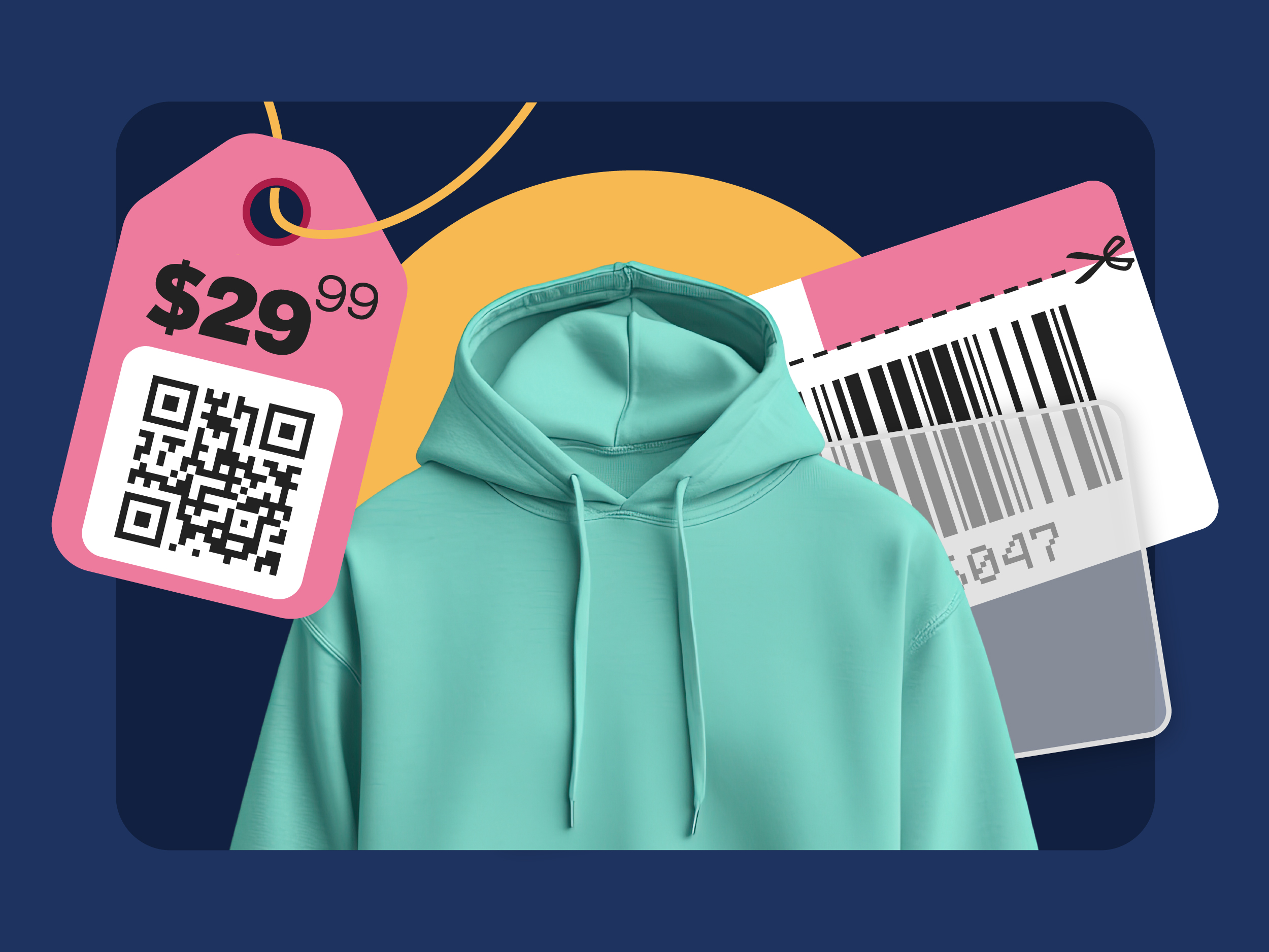In the fifth episode of Secret Life of Inventory, we welcome our very first guest, Jonathan Gregory, Director of Global Standards at GS1 US. Jonathan helps us uncover why standardization isn’t just a nice-to-have, but the backbone of modern supply chain success.
We discuss barcodes, RFIDs, tips businesses can use to standardize their operations, and the benefits that come with it. We encourage you to watch the full episode below for all the nitty-gritty, but you can also read on for a quick recap.
Who is GS1, and why should you care?
If you’ve ever scanned a barcode at checkout, you’ve inadvertently crossed paths with GS1. As a not-for-profit organization with over 110 country-specific branches worldwide, GS1 provides the technical standards that keep global commerce running smoothly.
In fact, they were among the architects of the UPC barcode. A technology that revolutionized retail 50 years ago. GS1 barcodes are scanned over 10 billion times per day. That’s more than Google searches. Let that sink in for a moment.
Standardization: the business practice you didn’t know you needed
Jonathan puts it perfectly: “Standards work best when you don’t notice them.” They’re like the bowl you pour your morning cereal into. You don’t think about the bowl you use to eat the cereal. You just know that’s what’s needed to get the job done.
It’s when you don’t follow standards that problems emerge. Take, for example, a vertically integrated retail apparel company that uses proprietary product identifiers. Everything works fine until they want to expand into wholesale or explore new distribution channels. Suddenly, they’re faced with a complete system overhaul, the need to roll back changes, and unnecessary rework.
The companies that follow GS1 standards? They have what Jonathan calls “business agility”, the freedom to pivot when opportunities arise. For example, when the pandemic hit and retail stores shuttered their doors, most businesses scrambled to find new distribution channels. But companies like Decathlon? They seamlessly started selling products in gas stations because they had something their competitors didn’t: a foundation built on global standards.
The barcode revolution happening right under your nose
While AI and automation seem to be getting all the attention nowadays, barcodes are quietly experiencing their own revolution. GS1 is transitioning from 1D to 2D barcodes through the Sunrise 2027 initiative.
Why does this matter? Because 2D barcodes can carry exponentially more data than their 1D predecessors. Imagine walking into a grocery store and being able to glean all kinds of information from scanning a barcode. Things like potential recalls, nutritional information, product origins, and more.
This isn’t science fiction, it’s the near future of retail.
How RFIDs add to inventory management synergy
Let’s talk about RFID technology for a moment. Unlike traditional barcodes that require line-of-sight scanning, RFID tags can be read without direct contact. Given they’re within range of the scanner, of course.
This technology has proven invaluable for countless businesses. For instance let’s say you run a distribution center that receives a pallet of heavy office desks. Currently, workers must depalletize every desk, scan each barcode individually, then repalletize everything. Obviously, this is going to require a ton of manual labor. But with RFID, you can read the entire pallet’s contents without removing a single desk.
Why standardization matters more than ever
Jonathan uses a hiking analogy that perfectly captures the value of standardization: “You have the freedom to go off the path, but you don’t have the community that goes on the path. You don’t have the infrastructure, resources… and you might get lost.”
When you follow standards, you gain access to:
- A wider array of distribution channels
- Solutions built by partners who understand your needs
- Future-proofing for technologies we haven’t even imagined yet
- The freedom to choose from a marketplace of compatible solutions
Getting started: your first steps toward standardization
The good news? You don’t need to overhaul your entire operation overnight. Start simple by using standards to identify your products. Visit GS1’s website, talk to their team, or leverage their call center to begin licensing a GS1 company prefix—your gateway into the world of standardized product identity.
Remember, this isn’t just about compliance; it’s about positioning your business for opportunities that haven’t yet revealed themselves.
Wrapping up
Standardization might not be the flashiest topic in supply chain management, but it’s arguably the most important. In a world where business agility can make or break your company, following global standards isn’t just smart, it’s essential.
Want to dive deeper into the technical details and hear more real-world examples? Check out our full conversation with Jonathan Gregory, where we explore everything from AI integration to the global impact of GS1.





0 Comments